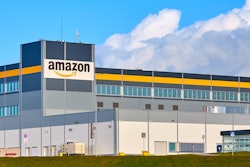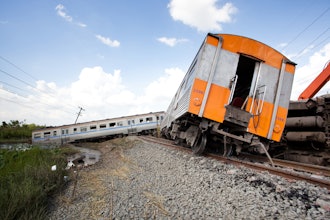
Technology is an inseparable element of the workplace today, commendably making businesses more productive, competitive, and secure. In today's rapidly evolving work landscape, ensuring workplace safety compliance has become more critical than ever before. However, various technological solutions for workplace safety have improved safety dramatically, while also helping companies stay compliant.
With the integration of such cutting-edge technology, businesses can now revolutionize their safety measures and create a secure environment for their employees. This article will explore the top five pivotal technological tools in achieving workplace safety compliance.
1. Real-Time Monitoring Systems: Staying One Step Ahead
Real-time monitoring refers to the continuous and immediate tracking of data, events, or activities as they occur. With the help of sensors, devices, and technology, this is possible and can help to collect and transmit information in real time, allowing for instant analysis, decision-making, and response. This monitoring approach enables organizations to stay informed about various processes, conditions, or situations as they unfold, rather than relying on periodic or delayed updates.
Computer Vision, also known as Vision AI, is a transformative technology that offers continuous monitoring. In recent years, it has proven to be a pivotal tool for enhancing workplace safety and compliance where AI-powered computer vision algorithms are integrated with the existing surveillance camera infrastructure to identify hazards in real-time. This technology excels in detecting workplace safety hazards and identifying potential accidents as they occur.
For example, a Vision AI system in a warehouse can detect when forklift operators are not wearing proper PPE and immediately alerts supervisors. The use cases, though, are not confined only to PPE detection and could include slip and fall detection, fire detection and occupancy metrics.
CCTVs with smart AI algorithms continuously monitor operations and become proactive sources of insightful safety information. They provide instant automated alerts for the timely personnel intervention, making processes and operations smarter. Moreover, researchers have found that workplaces incorporating Vision AI are witnessing a significant decrease in safety violations.
Other than Vision AI, IoT (Internet of Things) also enables real-time monitoring of equipment, environments, and employee activities, allowing rapid identification of risks and proactive compliance measures. Sensors and wearable devices work in unison to gather data on employee activities and environmental conditions, allowing companies to identify potential risks in real time. For instance, smart helmets embedded with sensors that can detect dangerous levels of toxins, monitor heart rates, and even alert supervisors in case of falls or accidents.
According to a study by Harvard Business Review, companies that implemented IoT-based safety solutions experienced a 10-25% reduction in workplace incidents.
2. Organized Safety
Managing workplace safety compliance involves a labyrinth of documentation, audits, and incident reporting. Most organizations struggle with a lot of paperwork, files, and Excel-based techniques to manage records and reports. Enter compliance management software, a digital savior that streamlines these processes.These platforms offer automated workflows, audit trails, and task scheduling, ensuring that safety protocols are followed diligently. Imagine a chemical plant utilizing compliance management software to document safety procedures and track inspections. The software sends automated reminders for scheduled maintenance, promptly addressing hazardous conditions. It's no wonder that companies using EHS Software report a 60% decrease in compliance-related incidents and injury rates.
3. VR and AR: Learning Through Experience
Training employees to navigate potentially dangerous situations can be challenging. This is where VR and AR applications step in, offering immersive simulations for safety training. Through these technologies, employees can practice emergency protocols and hazardous scenarios without actual risk. This approach to learning ensures that the employees are efficiently and adequately trained and can operate safely within the real-time hazardous environment, reducing the risk of accidents.Consider an oil rig operator undergoing VR training to respond to a sudden gas leak. The operator experiences a high-stress situation, making split-second decisions to contain the leak. Studies have even shown that immersive VR training can also enhance retention rates by up to 80%, as per the National Training Laboratory.
4. The Power of Data
Data isn't just numbers; it's a treasure trove of insights waiting to be unearthed. Data analytics and predictive tools analyze historical data to identify safety trends and predict potential risks. These tools empower companies to take proactive measures before accidents occur.A manufacturing plant, for instance, can analyze incident data to pinpoint common causes of accidents, recognize patterns, trends and hotspots based on historical data, leading to targeted safety training and process adjustments. According to a report by McKinsey, companies utilizing data analytics helped them achieve safer workplaces, and they witnessed a decrease in workplace injuries within the first year of implementation.
5. Safety at Your Fingertips
In a world dominated by smartphones, mobile apps are a convenient and accessible way to ensure workplace safety compliance. These apps allow employees to complete safety checklists, report incidents, receive emergency notifications, and communicate seamlessly. Supervisors can capture photos, notes, and locations, instantly creating a comprehensive report accessible to the entire team. Research by the American Society of Safety Professionals reveals that 70% of safety professionals believe mobile apps improve safety compliance.As we traverse the technological landscape, the integration of Vision AI and IoT for real-time monitoring, compliance software, VR/AR, data analytics, and mobile apps are slowly paving the way for safer and more compliant workplaces. By harnessing these tools, companies not only protect their most valuable assets — their employees — but also enhance operational efficiency and regulatory adherence.
In the end, it's not just about embracing technology; it's about embracing a culture of safety that propels businesses toward a secure and prosperous future.
Harsh Murari is the CTO and Co-Founder at Visionify.ai.





















